|
Teaching the presidential election in your homeschool co-op is a fabulous idea. Maybe your co-op is an informal gathering of a few families. Or maybe it is big and organized. No matter your co-op’s shape or size, this article covers why your co-op should study the presidential election…and how to do it with civility and grace!
There are so many reasons to teach the presidential election in your homeschool co-op. This article covers our top four. All reasons point back to our north star here at Silverdale Press: helping you raise great citizens. Teaching the presidential election in your homeschool co-op will allow you to… Seize a Unique Learning Opportunity The presidential election presents a unique learning opportunity for students. Presidential elections happen only once every four years. But when they do happen, they stir loads of interest and excitement. There is drama. There is intrigue. There are high stakes. A homeschool co-op class on the election will capture the interest and excitement that is already in the air. Most students will not have the chance to take a course on the presidential election after they graduate. Do not let this opportunity to educate and inspire future voters pass you by. Enhance Civics Education Another reason to teach the presidential election in your homeschool co-op is to enhance civics education. If civics does not make your heart sing, try approaching it from the election angle. Teaching the presidential election is a great way to make civics come alive. Presidential elections cover a wide range of civics-related topics. You can learn about the Constitution and U.S. laws. You can learn about the election process, including how the primaries and Electoral College work. You can learn about political parties, what they believe and how they choose their candidates. You can learn about issues that are important to voters and what policies the winner may set into motion. You can learn about media coverage of the election, including candidates’ use of social media. You can learn about campaign advertisements and how they are put together. You can learn about how citizens vote and what happens on Election Day. You can even take your co-op class all the way through the presidential transition and Inauguration Day. Build Community There are many reasons homeschool families join co-ops. Sure, there are academic reasons. Students need courses and subjects; parents need help offering those courses and subjects. Social reasons are just as important. Children need friends and companionship, and for homeschoolers relationships are often formed in co-op classes. It is helpful for middle and high school students to have a safe forum where they can process what they are seeing and hearing about the election. Sharing thoughts, feelings, and ideas builds community. And don’t forget about the fun. From screening debates to volunteering to watching the returns come in on election night, there are many things that are better when done together. This also builds community. Discuss and Debate The presidential election is a great chance to sharpen critical thinking and debate skills. The election is all about competing candidates, worldviews, parties, and policies. It naturally presents issues for debate and discussion. You can’t discuss and debate by yourself. You need other people. A homeschool co-op provides those other people. Discussion and debate are so important for student learning! How Your Co-op Can Study the Presidential Election…with Civility and Grace Will there be people who don’t want to study the presidential election in your homeschool co-op? Perhaps. For some, politics is repulsive. Others may worry about offending others or being offended. Some may not like the conflict that comes with the quest for power. We, however, believe that the presidential election should be part of a well-rounded civics education. Here are three steps you can take to overcome those fears and ensure a happy and peaceful environment for learning about the election. Set ground rules The classroom should be a zone of political civility. People will disagree, and that should be expected. Set ground rules for civil discourse. Raise hands. Don’t talk over people. Don’t raise voices or shout. Acknowledge another’s point of view. Don’t call people names or attack them personally. Teachers stay neutral Of course, teachers will come with their own beliefs and opinions. Even so, it is important that they try to stay neutral in their roles as moderators and facilitators. The goal is for students to reason through and share their own beliefs and opinions about the election. As authority figures, teachers can intimidate students who may not share their views. Look for common ground Some say that what unites us as a nation is greater than anything that divides us. Seek out shared values. Brainstorm bipartisan solutions to the major issues of the day. Focus on the greater good. Remember that people can be civil and stay true to their own beliefs and values at the same time. You can teach the presidential election in your homeschool co-op and maintain an atmosphere of civility and grace! Do you need a resource for teaching the presidential election in your homeschool co-op? Look no further than our Presidential Election Unit Study. Full of information, video resources, activities, and questions for debate and discussion, it is perfect for homeschool co-ops. It even comes with an answer key. It is guaranteed to make teaching the election in your homeschool co-op a breeze.
0 Comments
Dr. JillAuthor, educator, mom, and Ph.D. 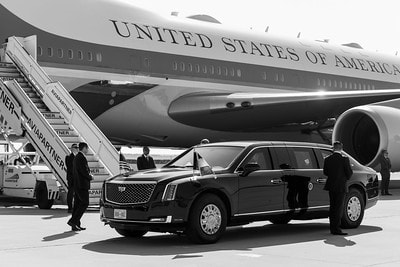 Air Force One and the Presidential Limousine, Courtesy the White House Air Force One and the Presidential Limousine, Courtesy the White House Homeschooling provides a golden opportunity for teaching kids about the presidential election. Presidential elections happen only once every four years. From the first-in-the-nation caucuses and primaries through Election Day, excitement builds throughout the year. Harness that interest by building the presidential election into your homeschool curriculum. It will provide your kids with a wealth of civic education. Do you want to teach the presidential election in your homeschool but don’t know where to start? Here are five effective strategies to get you going. Pay Attention I went to graduate school for political science. My very first semester coincided with a presidential election. A professor was offering a class on the election, so I signed up. He wrote a book about every election, and he used the class to pick our brains about what we were thinking. The class met for three hours at night. We sat around a long, narrow table on the first floor of a historic building at our university. And we rehashed what happened in the presidential campaign that week. Of course, we had some readings and a final paper. But most of all, we were asked to pay attention and come to class ready to discuss the latest developments. If you want your kids to learn about the presidential election, pay close attention to it. Much can be gleaned about candidates and their campaigns simply by paying attention. Watch It I prepared for my graduate school seminar by watching the campaign unfold. So much raw campaign material is televised and streamed these days. On live television, I watched the three presidential debates and one vice presidential debate. On election night, my classmates and I gathered at a fellow student’s house. We had food and stayed up until the wee hours of the morning and watched the returns come in. When it was all over, I got tickets to the inauguration and watched it live from the frigid National Mall. If you want to make the presidential election part of your homeschool curriculum, I suggest you watch it. For the early primaries and caucuses, you can watch the returns come in from Iowa, New Hampshire, South Carolina, and other states. Cable television networks and their websites will carry these live. During the summer or early fall, you can watch four nights of convention programming for each political party. Then as Election Day gets closer, tune into the debates. On election night, watch the returns come in from across the entire country. To fill in the gaps, the candidates have their own YouTube channels with their campaign ads and policy videos. Work your way through these, and you will learn a great deal. It is best to watch raw material—live or recorded events—rather than somebody else’s interpretation of them. Consider these primary sources for your election education. Read about It It is still good, however, to have someone else’s take on campaign and election events. Newspaper articles can fill in the background and give you information you would not otherwise have. When I was in graduate school, I started subscribing to a good, old-fashioned newspaper. I still do today. When it arrives in our mailbox, I bring it inside and set it on our kitchen table so that my kids can page through it when they have some downtime. There is value in kids seeing newsprint and reading articles slightly above their level. You can’t beat a newspaper, local or national, for in-depth coverage of the presidential election. There will be maps, graphics, and statistics. There will be in-depth coverage of issues. From the primary season through the inauguration, you are pretty much guaranteed to see an article on the presidential election just about every day. Do you cover current events as a regular part of your homeschool curriculum? If not, the presidential election season is a great time to get started. Whether you gather for morning basket time or afternoon teatime, shared learning times are ideal for engaging the whole family in election learning. Choose a newspaper article and read it aloud. Discuss it together. If there are maps, charts, graphs, or illustrations, pass those around the circle. Check out our complimentary Current Events Quick Start Guide if you need help getting started. Do It Together One of my best memories from my graduate school class is learning about the election with other people. I have vivid memories of my fellow students, my professor’s good humor, and everybody’s different viewpoints. I don’t remember the specifics about our weekly reading assignments, but I do remember the fun we had watching the drama of the election unfold together. One of the best ways to homeschool the presidential election is to do it with other people. Is your family part of a homeschool co-op? If so, consider offering a course on the presidential election in your homeschool co-op. Do you have another family or two that you get together with on a regular basis? Ask that family to join with yours in learning about the election. At the very least, gather to watch a debate or two and election night coverage. Use a Presidential Election Curriculum As a parent or co-op teacher, do you find the presidential election complicated and confusing? Don’t worry, they are! Can you confidently explain how the Electoral College works? Do you know why we have the Electoral College in the first place? Do you know what a party platform is? Are you up to date on the latest developments in election laws and voting methods? If you could use a helping hand in guiding your homeschooled students through the presidential election, look no further. Our Presidential Election Unit Study will be your guide from Iowa’s first-in-the-nation caucuses all the way to Inauguration Day. It is both in-depth and accessible. No prep work is required for parents or teachers. It has lessons, review exercises, and questions for debate. It has video links to amazing resources on the web, from campaign ads to documentaries to historic debates. At Silverdale Press, it is our mission to help you raise great citizens. The presidential election is the perfect time to do just that. Don’t miss out on this amazing opportunity to educate future voters. 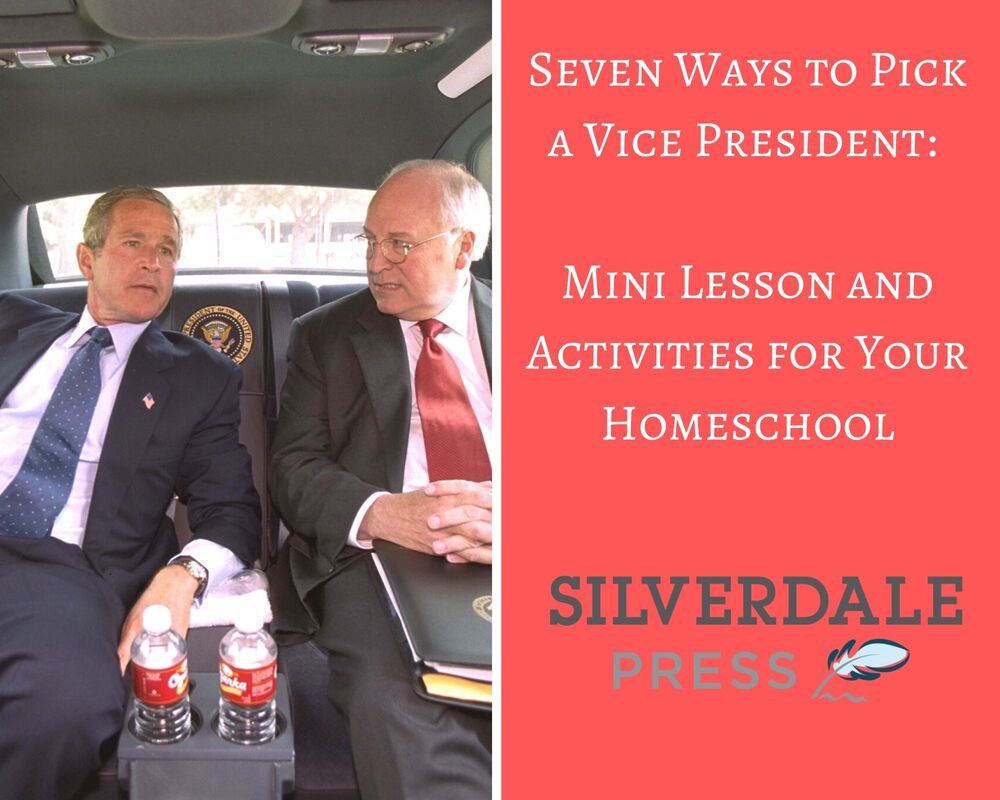 Are you studying the election in your homeschool? This week, we have a mini lesson on the vice presidential running mate. At the end, you’ll find activities and videos to keep your homeschool family busy and help them dive deeper into the presidential election. There’s so much buzz about possible vice presidential nominees right now. This is one of the major things that happens in the summer before a presidential election. Since 1960, presidential nominees from both parties have been able to choose their own running mates. It’s hard to believe this was not the case all throughout history! Selecting the vice presidential running mate is one of the most important decisions a candidate must make. Campaigns keep their choices secret for a long time. They try to take the time to think about and screen their possible picks. They also want to surprise voters, and the right choice can give a boost to a candidate who was battered in the primaries. The primaries are going on right now, so grab your free lesson the primaries. June and July would be great months to do this lesson with your homeschooling family. The lesson has key vocabulary, comprehension questions, videos, and activities to keep you busy and help you to ward off the summer slide! Who will the vice presidential running mates be? Here’s a mini lesson on 7 ways to pick a vice president. In 2020, only the Democratic nominee will choose a running mate. Today, sitting presidents who are running again usually don’t choose a different vice presidential running mate. 1. A Person with Good Character The vice president must have good character. The person also must be well respected. The choice is a direct reflection on the presidential nominee. The person must have experience leading and governing. It’s not a big deal if the person is not widely known. Voters will get to know the vice presidential pick very well throughout the campaign. The vice president will be making important decisions, representing the country, and governing alongside the president, so choosing someone with wise and sound judgement should be a top priority. 2. A Person Who Can Serve as President The Constitution doesn’t say much about the role of the vice president. Under the Constitution, the vice president’s main role is to succeed the president in case the president dies, resigns, or is somehow incapacitated. Throughout American history, eight vice presidents had to replace presidents who died in office (John Tyler, Millard Fillmore, Andrew Johnson, Chester A. Arthur, Theodore Roosevelt, Calvin Coolidge, Harry S. Truman, and Lyndon B. Johnson). One vice president, Gerald Ford, became president after Richard Nixon resigned as a result of the Watergate scandal. 3. A Person Who Can Help Carry a State or Region in the Electoral College Presidential nominees also choose running mates who will help them win the election. This is a fundamental truth of vice presidential selection. In 1960, John F. Kennedy, from Massachusetts, had to do well in the rock-solid Democratic South. (Today, we think of the American South as solid Republican terrain, but that wasn’t always the case). Southern voters, however, were a little wary of Kennedy, a Catholic from way up north in New England. To help him win voters in the South, Kennedy chose Lyndon Johnson, a Texan, to be his running mate. The election was close, and Kennedy may well have lost if Johnson had not helped him win Texas. 4. A Person Who Can Balance the Presidential Candidate’s Beliefs This is another way a vice presidential running mate can help win the election. The idea here is that the vice presidential pick makes up for something the presidential candidate is lacking in terms of beliefs. We can also call it ideology, the general set of beliefs that make up somebody’s worldview. A candidate may choose someone more or less liberal or conservative than they are, to appeal to certain groups of voters. In 2016, Donald Trump wanted to pick a candidate who would appeal to traditional, conservative voters, a core group within the Republican Party. So, he chose Mike Pence, governor of Indiana and a solid Christian, to be his running mate. 5. A Person Who Can Help the Ticket’s Image Sometimes, presidential candidates try to attract voters by giving off a particular image. Vice presidential nominees can help with the ticket’s image. The ticket is the presidential and vice presidential candidates listed together on the ballot. In 1992, Bill Clinton chose Al Gore to be his running mate. Though he was about Clinton’s age and also from the South, Clinton wanted show himself as a “new” Democrat. A new generation, a younger generation, with different beliefs from the old, would be ruling from the White House. Gore helped with this image. In 2008, Republican candidate John McCain chose Sarah Palin, governor of Alaska, to be his running mate. He said he needed a “game changer,” since Obama was getting so much attention in the race. McCain was older; whereas, Palin was young. Palin added sparkle and interest to the ticket; she was the first female Republican vice presidential nominee. 6. A Person Who Can Balance the Presidential Candidate’s Experience Some presidential candidates come with more experience than others. A candidate who is less experienced will sometimes seek out somebody who is more experienced or who has experience governing in a different area than the main candidate. In 2000, George W. Bush chose Dick Cheney to be his running mate. Bush was in his second term as governor of Texas, where he mostly dealt with state issues, such as education. Cheney—former White House chief of staff, representative from Wyoming, and defense secretary—had lots of experience in national security and foreign affairs. For the same reason, in 2008, Barack Obama chose Joe Biden as his running mate. Obama was a pretty new U.S. senator, and some voters questioned his youth and inexperience. Biden had decades of governing under his belt, with special experience in international affairs. 7. A Person Who Has Certain Physical (or Demographic) Traits An old candidate might choose somebody younger, as McCain did with Palin. A young candidate might choose somebody older, as Bush did with Cheney. A Catholic candidate might choose somebody Protestant, as Kennedy did with Johnson. And a man might choose a woman, which brings us to our 2020 exercise… Are you planning to weave the presidential election into your homeschool curriculum this year? Our Presidential Election Unit study is the perfect fit. It will enrich your family and prepare your kids to become voters. Even mom and dad will learn things they never knew before! Download your free lesson on the primaries today! Key Words Ideology Ticket 2020 Exercises Current Events (News/Video): Back in March, the (presumptive) Democratic nominee has said he will choose a woman for his vice presidential running mate. Read/listen to the following:
Questions for Discussion and Debate:
Historical Exercises This exercise about history also helps us to think about 2020! It is from the 2016 election. Video Exercise:
Questions for Debate and Discussion:
A President's Book List: Summer Homeschool Ideas for Growing Great Leaders, Writers, and Readers5/16/2020 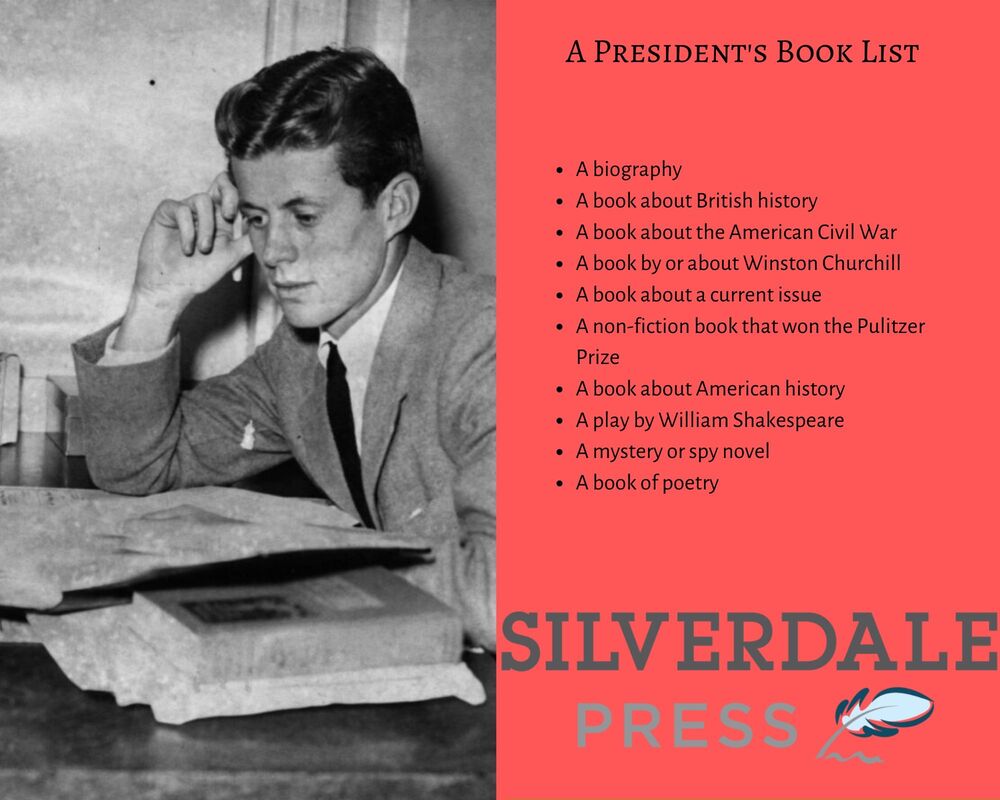 Want your kids to read like a future president? Start here. Summer is upon us! In many parts of the country, camps have been canceled or gone virtual. Swimming lessons are on pause. Parks are closed. Museums are shuttered. Libraries are keeping away the crowds. Vacations have been postponed. What’s a homeschool mom to do? Do the unstructured days ahead have you panicking? After all, our kids need something to keep them engaged and occupied during the long summer days. We do hope you plan to shelve your regular curriculum—at least for a little while—this summer. All moms need space to regroup, reorganize, and reflect. Even so, you still need to give your kids something to do. Even if your kids can’t compete in your local library’s summer reading challenge, the good news is that they can still keep reading. Reading well, often, and widely is a prerequisite for success in school and life. It should absolutely not stop over the summer. Plus, reading keeps your kids learning and provides structure to fill those long days ahead. At Silverdale Press, we help your family to learn about the presidents. If you haven’t grabbed your free lesson on the presidential primaries from our Presidential Election Unit Study 2020, the long summer days ahead would be a great time to try it out. In our curriculum and unit studies, we also help your kids to form the habits of great leaders and citizens. Reading is one of those habits. Reading is always a good idea. This summer, why not start by putting together a book list for your children? Use the list to read aloud together as a family. Or have your kids read through the list on their own, during a morning or afternoon quiet reading time. A President’s Book List Do you want to come up with a book list but don’t know where to start? Don’t worry. We have you covered. In our high school language arts curriculum, Persuasive Writing and Classical Rhetoric: Practicing the Habits of Great Writers, we train your kids in the habits of the great writers of Western civilization. Great leaders, who were also great persuaders, were also great readers, thinkers, and writers. As president, John F. Kennedy wrote some of the most well-known speeches in American history. In 1957, he even won the Pulitzer Prize, one of the highest awards given to writers, for a book he wrote on courageous leaders. “Before we were married, whenever he [John F. Kennedy] gave me a present it was usually a book. History. Biography.” -Jacqueline Kennedy Kennedy was a great reader. According to his wife, Jacqueline, even during his busiest campaign seasons, he would make time for reading. “He’d read while walking, he’d read at the table, at meals, he’d read after dinner, he’d read in the bathtub, he read—prop open a book on his desk—on his bureau—while he was doing his tie. You know…he’d open some book I’d be reading…just to devour it. He really read all the times you don’t think you have to read,” she said. As a child, Kennedy was often quarantined at home, sick in bed. He used those long, home-bound illnesses to read. As a youth, one of his favorite writers was Winston Churchill, the great British prime minister. Kennedy read a wide variety of genres. He read some fiction and a little poetry, mainly by Lord Byron. As for drama, he would pick up bits of Shakespeare. He mostly read history and biography, with a hefty amount of Civil War and British and American history. “He was looking for something in his reading. He wasn’t just reading for diversion. He didn’t want to waste a single second,” his wife said. Kennedy was searching for lessons in history or at least a good quote. Every Sunday, JFK would rip out the book review section of the newspaper and put an “X” over the books he wanted his wife to buy. She would place her order at a local bookstore in Washington, D.C. So, without further delay, we present to you a president’s book list. These book ideas are based on President Kennedy’s reading habits as a boy and young man. If you want your kids to read like a future president, this is a great place to start. Notice that we’re not recommending specific books. We think that it is best for your kids to have a say in what they read. They are more likely to buy into the book list if they have a say in shaping it. So, for example, in choosing a biography, allow your son to choose a person that interests him. For a current issue, allow your daughter to choose something she’s passionate about. A President’s Book List
Don’t forget to download your free lesson on the primaries from our Presidential Election Unit Study 2020 for homeschools and co-ops. Click here to learn more about how to teach your kids the habits of great writers. 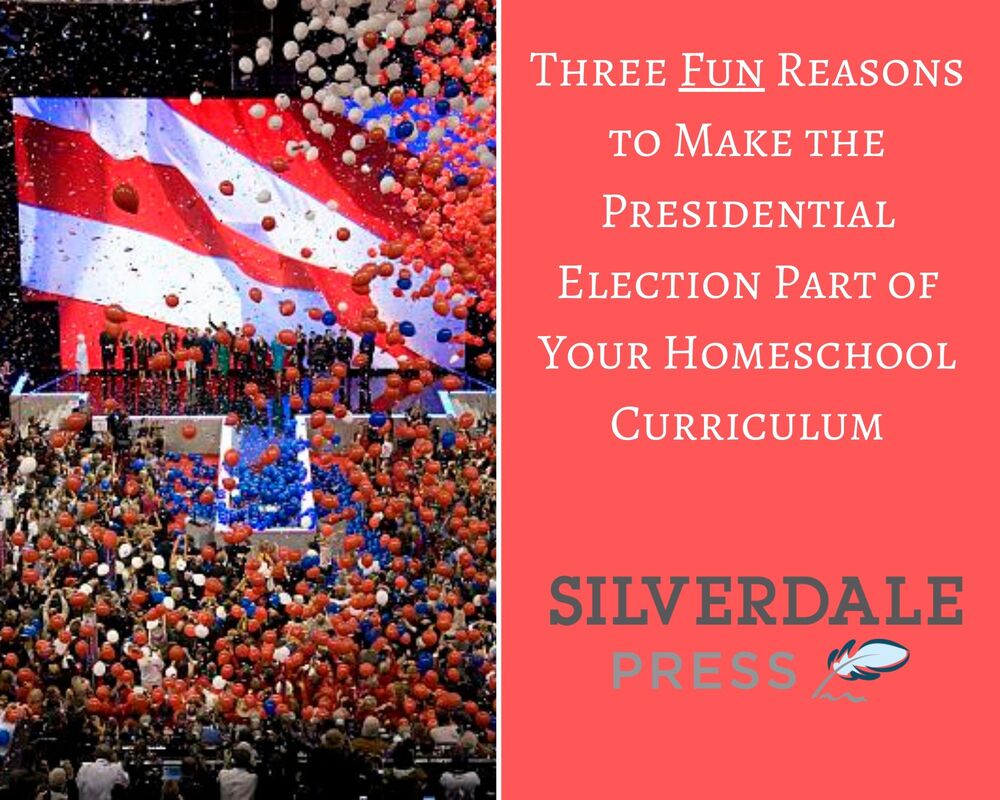 The end of the school year is near! If you’re not a year-round homeschooler, you know that these last days and weeks can be a slog. They can drag on for you, and they can drag on for your kids. Add quarantining and social distancing on top of it, and you have a recipe for the doldrums! We could all use a little fun, right? Planning for next homeschool year can be a bright spot in otherwise dreary times. No doubt, you’re thinking about how you can make next year more enjoyable than the last. You’re thinking about what topics and curriculum will keep your kids interested and motivated. How can both you and your kids have a unique and enjoyable learning experience? May is a great month to plan the next homeschool year. Maybe you’re crafting some fun unit studies. Perhaps you’re pulling together compelling book lists. Maybe you’re even listing the habits and character qualities you want to instill in your children. As you plan for next year, why not make the presidential election part of your homeschool curriculum? We already gave you three important reasons to study the presidential election in your homeschool. Now here are three fun reasons to make the presidential election part of next year’s lesson plans. Don’t forget to download our free lesson on the primaries from our Presidential Election Unit Study 2020. The primaries are happening now, and this is a great chance to give it a trial run to see how it can add fun to your school year. 1. Shake Things Up! Math, English, Science, Repeat. Math, English, Science, Repeat. Day 23, Day 24, Day 25. Check, check, check. Do your homeschool days sometimes feel like this? You count off days and lesson numbers. You check off boxes and satisfy state compliance rules. It doesn’t take long into a brand-new year for things to start to feel, well, dull. A compelling unit study can be just the thing to add some spice to your curriculum. Unit studies are a great way to explore fun topics that aren’t covered in depth elsewhere. For example, your history curriculum may spend a day or a week on George Washington. But what if your kids really show an interest in Washington and want to do more? A unit study is just the ticket. Our Presidential Election Unit Study 2020 will be perfect for the coming school year. It’s a fun topic and one that your regular curriculum probably does not cover in much depth. At a time when everyone will be buzzing about the election, you’ll have the chance to take a deep dive into the topic and learn more than you ever imagined. There are eight in-depth lessons that cover every step of the campaign and election—from the Iowa caucus to the inauguration. Plus, it will provide you and your kids a welcome break from Math, English, Science, Repeat! 2. Engage! We know that homeschool families are engaged in the world around us. Though some people may view us as hermit-like, unsocialized, and out of touch, we know better. The overwhelming majority of homeschool families care about our nation. They are tuned in. They volunteer in their communities. They pay their taxes and exercise the privileges of citizenship. Learning about the presidential election as part of your homeschool curriculum allows your family to engage even more. Our Presidential Election Unit Study 2020 has many opportunities for students to engage the people and world around you and engage in their own learning. Numerous studies show that learning happens best when students are engaged in their own learning. Our Presidential Election Unit Study 2020 has so many built-in opportunities for your students to engage. Each lesson has questions for debate to get your students engaged in the important questions of the day. Is it fair that Iowa and New Hampshire get to vote first during the primary season? What are the most important issues in 2020? It also has many hands-on activities to get your kids involved. They can convene their own constitutional convention. They can sign up to volunteer for a candidate or party. They can write a letter to the editor of your local paper. 3. Enjoy Educational Screen Time! Do your kids beg and plead for screen time? We all know that reading a biography is much better for our kids than letting them watch movies and play video games. I know that we as parents do our best to limit screen time. But the struggle is real, especially in these extraordinary times. The good news is that presidential campaigns allow for so much educational screen time. Since the dawn of television, campaigns have been waged over the airwaves. The audiovisual records are history! In the 2020 edition of the Presidential Election Unit Study, we’ve added a new section at the end of each lesson: videos. In even better news, the videos are all Internet-linked and family-friendly! We know these videos will be a blessing to homeschool parents and a delight to your kids. They will learn so much and have fun. They will watch television ads through history. They will relive historic presidential debates. They will watch news clips about important events, and they will watch interviews with experts on topics such as the history of vice-presidential picks. As you plan your upcoming homeschool year, why not add the Presidential Election Unit Study 2020 to your curriculum? It’s sure to add FUN at a time when we could all really use it. |
Silverdale PressCheck out our About Page to learn more about us! Categories |

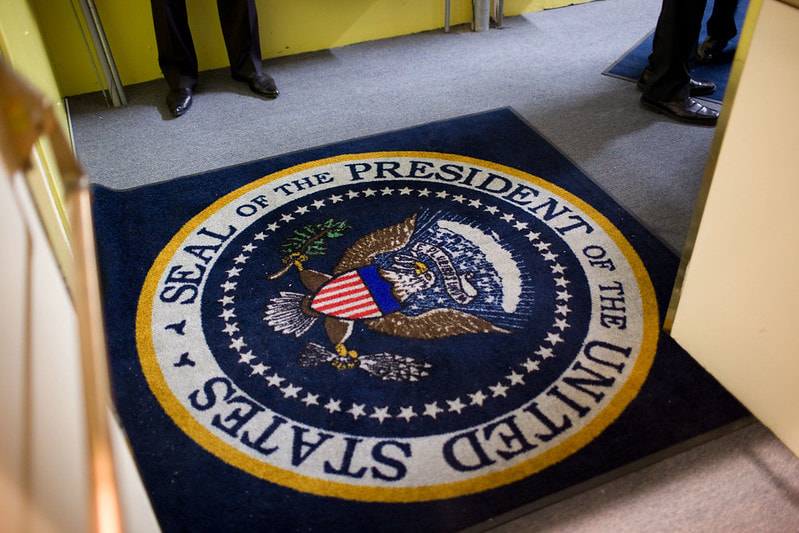
 RSS Feed
RSS Feed